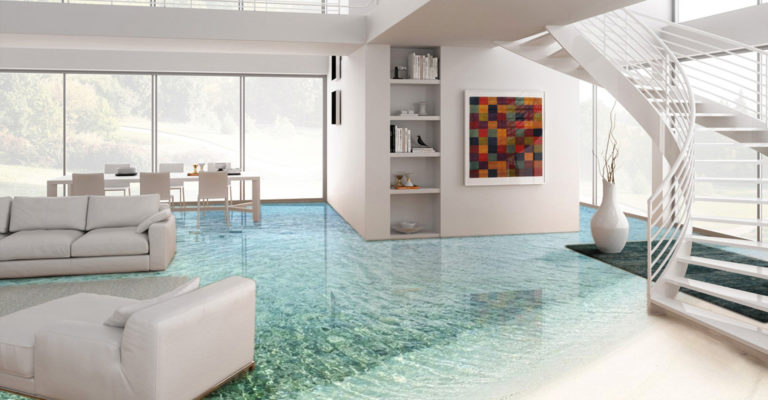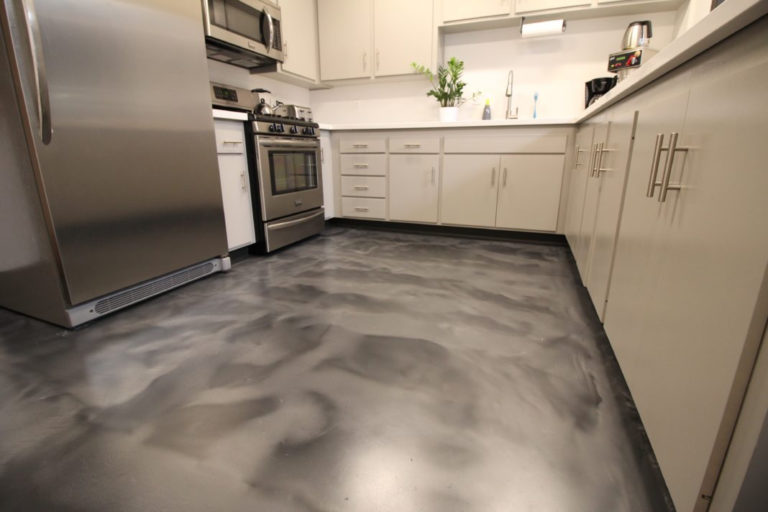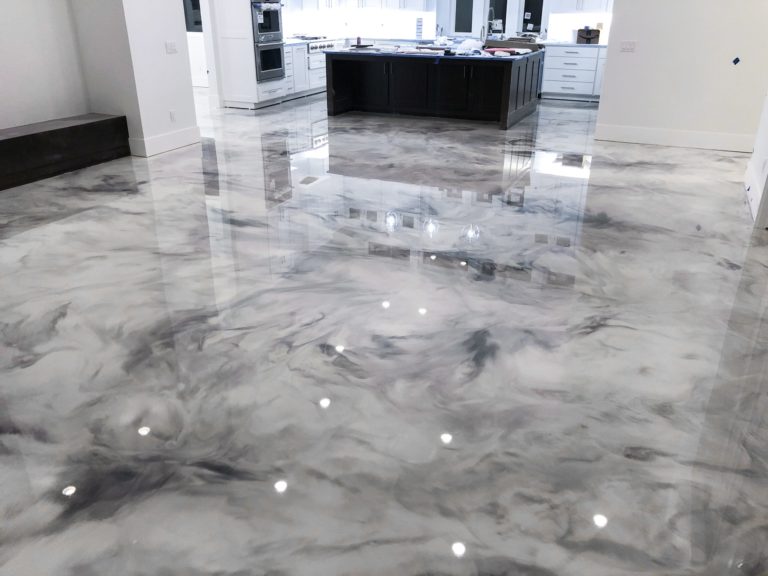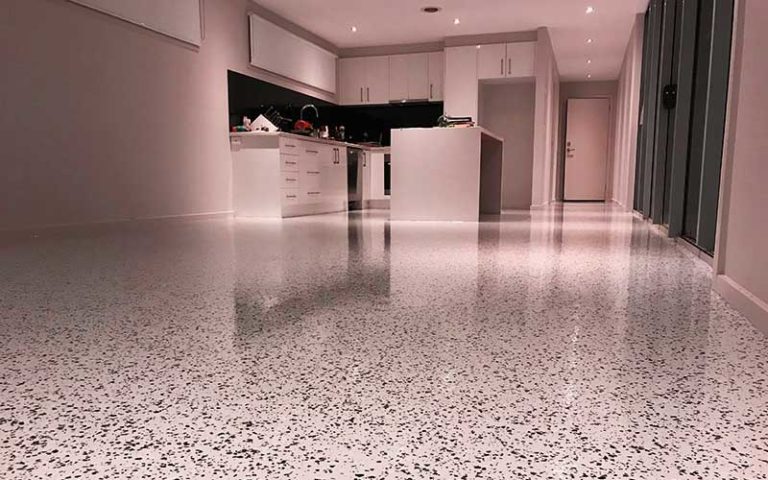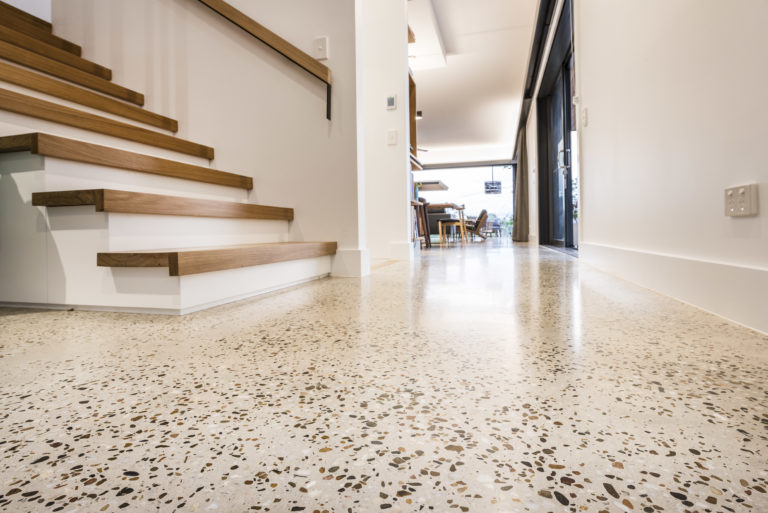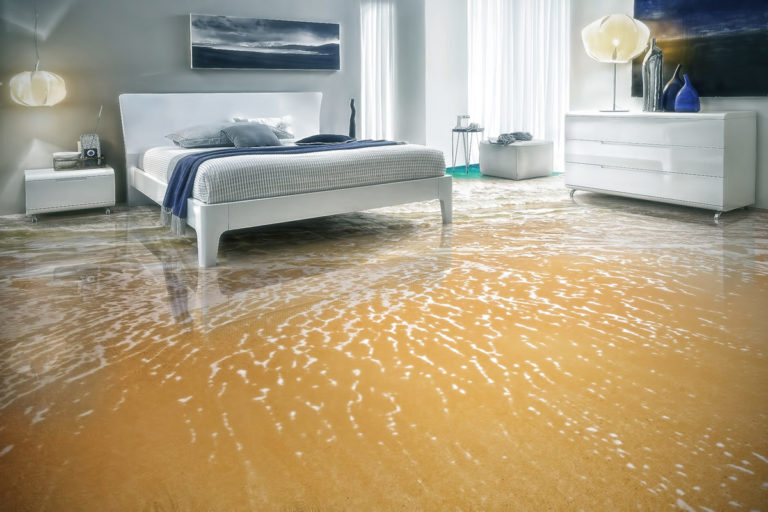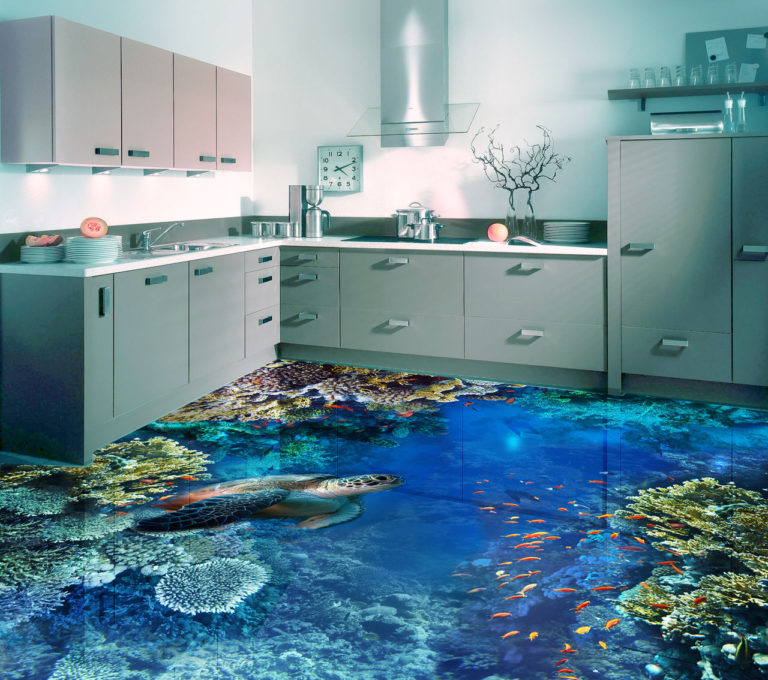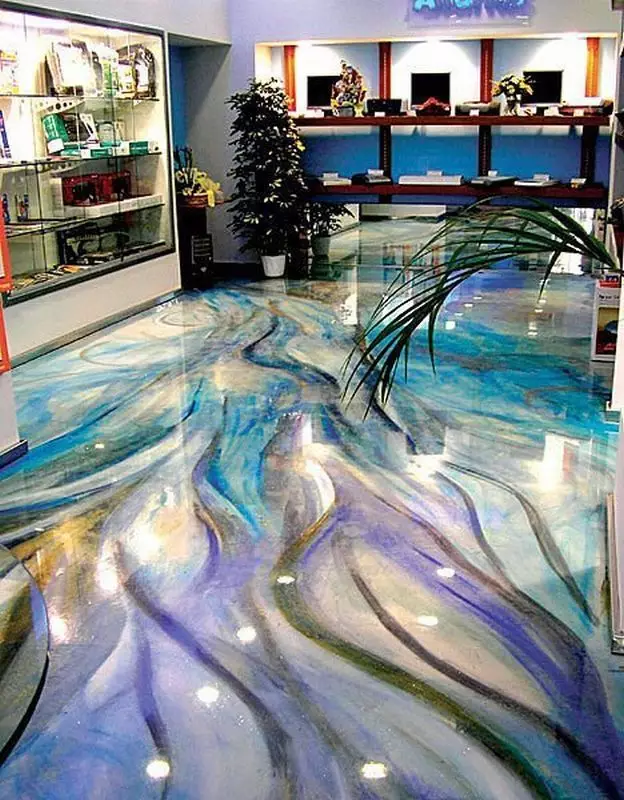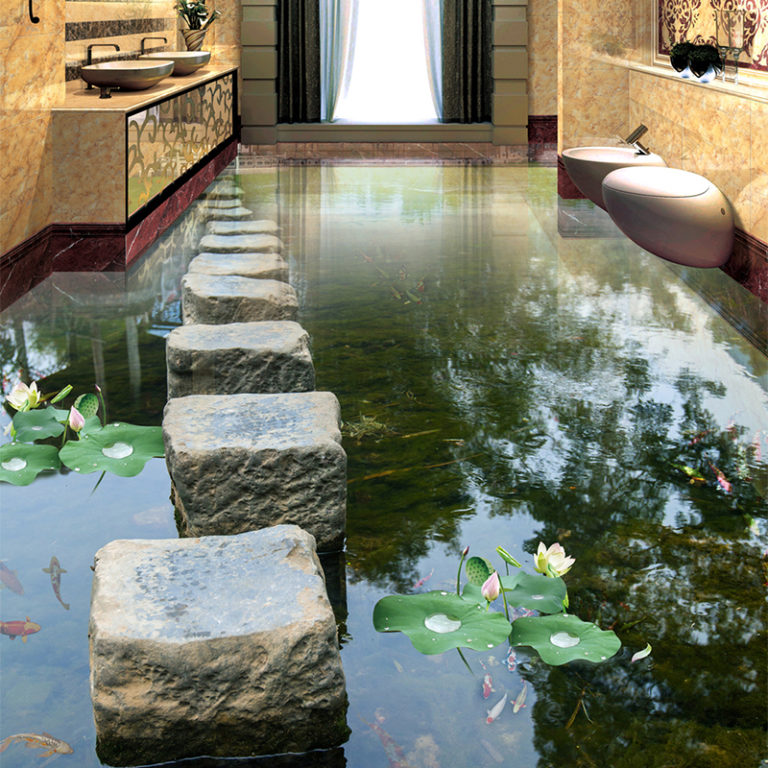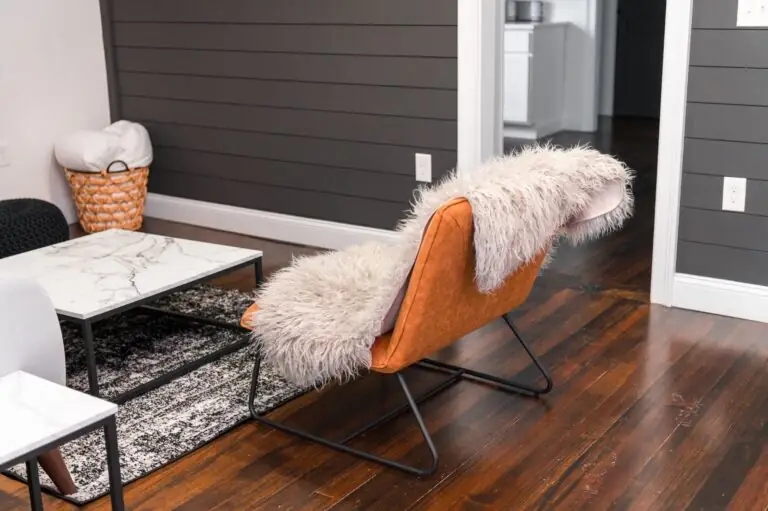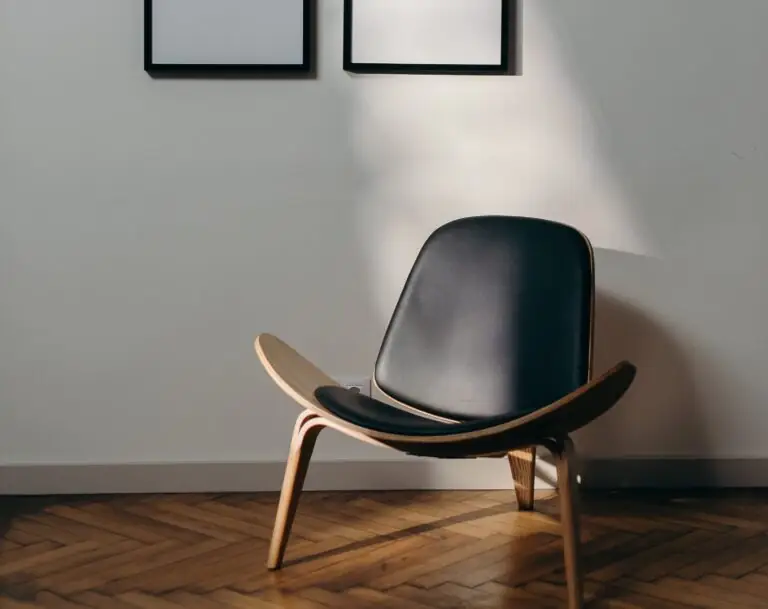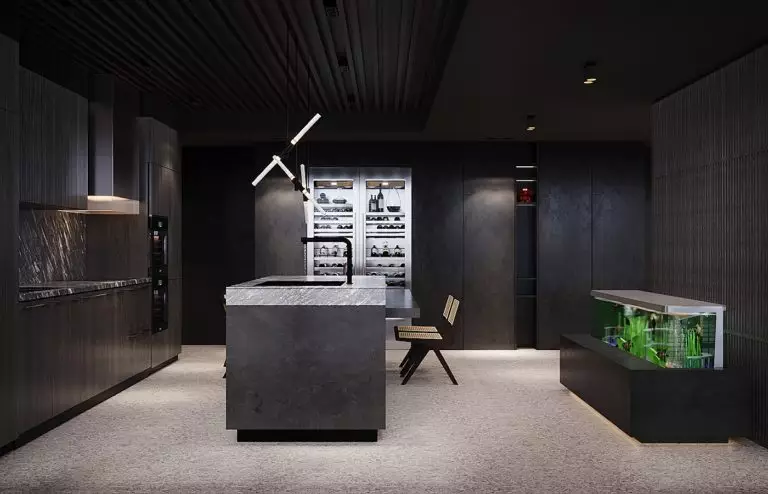
Strong, durable, original, and versatile in use – polymer flooring has many valuable properties that make it more popular in private houses. This type is no longer just a way to create durable floors in factories. Polymer flooring can be used as a covering for old floors, as part of renovations, and used in tandem with underfloor heating systems.
After the house’s construction is completed at the closed-shell stage, it is time to finish the living and utility rooms gradually. The house’s design may consider specific floors, the type of wall covering, or other elements. Resin floors are new to the market. So far, this flooring is associated only with production facilities.
What is polymer flooring and where should it be used?
Polymer floors are made from epoxy or polyurethane resin, which are flexible and easy to apply. Polymer flooring consists of so-called elastomeric resins with the addition of solvents. Their peculiarity is that after being poured onto the floor surface, these mixtures penetrate all cracks and defects, thereby leveling irregularities and protecting the floor from damage due to daily, often very intensive use.
Thanks to polymer flooring, you get a smooth, even surface that no longer needs to be leveled. Moreover, such floors work well with underfloor heating. Their advantages include being electrostatic, which means they don’t generate as much dust as other types of floors. You can easily keep them clean and also use any chemicals to clean your resin floors.
Types of polymer floorings
You can choose from various types of resin floorings. This group includes:
A special type of polymer flooring is thick quartz flooring created by pouring colored or natural sand into the polymer. These floors are recommended for high traffic areas. Mainly for hallways, corridors and lobbies. A wide range of aggregates can be used in high build quartz resin floors. Floors can be plain or a mixture of different shades of colored sand.
Polymer flooring properties
Resin floors are smooth and can be treated in various ways to create a multi-colored, glossy, semi-matte, or matte composition.
What resins are used for polymer floorings?
Two types of resins are used for the manufacture of high-build polymer floorings: epoxy and polyurethane.
How much do polymer floorings cost?
Do you like resin floors? The price of such floorings is a definite obstacle to their use in private houses. In fact, laying it down is expensive. It is worth noting here that polyurethane resin floorings are more costly than epoxy resin floorings.
This is because the manufacturing method of these floorings is different. You also need to consider the cost of purchasing materials, accessories, and tools for making a 3D polymer floor.
When can you pay a little less for a polymer floor? In the price list of companies specializing in such floorings, discounts are provided for large areas. The price list of polymer floorings for several hundred square meters can be very attractive for the client since the reduction can reach a significant amount.
It is necessary to consider not only the price of a complete polymer coating system, including the selected resin, primer, varnish, anti-slip and finishing (top) layer, and labor costs.
Resin floorings – where to use?
Resin floors are sure to be found in commercial spaces such as showrooms. This type is often used in typical industrial buildings because of its high mechanical strength, hardness, and durability. Resin floors are easy to keep clean because of an almost perfectly smooth surface. All of this means that polymer floors are increasingly appearing in home spaces but are not quite the same as in industrial spaces.
Resin screeds can be used throughout the interior as well as in more demanding rooms and indoor areas. It is recommended to use them for rooms and areas that are heavily used, such as a garage, hallway, kitchen, or hallway. Resin floorings are also great for a bathroom.
Because resin floors are suitable for underfloor heating, there is nothing to stop planning in the living room. Resin floors in the living room will help illuminate the room, making it more spacious.
What’s more, resin floorings can also be used on balconies or terraces because external factors such as temperature fluctuations, sunlight, and rainfall does not damage them. Polyurethane resin is used as a lacquer or thin coat to protect epoxy surfaces and as resin paints to renovate surfaces. Resin floorings on the exterior staircase will provide a durable finish.
What basis to choose for polymer floors?
To ensure the durability of polymer floors, the professional preparation of the substrate is of decisive importance. If not cleaned, it can even lead to cracking of the polymer flooring. So it doesn’t matter what kind of substrate you have. You just need to prepare them for the next layers of polymer coating properly. The base should be leveled and strengthened.
If you have a concrete base, it must be leveled before pouring the resin mixture. The concrete should be free of cavities and deep cracks. It must also meet the polymer flooring manufacturers’ requirements, such as the grade of concrete used for the subfloor – a minimum grade of C20 / 25 is suitable. Besides, the substrate must have the correct moisture content.
Before applying a resin layer to the concrete screed, it should be left in place for four weeks and then sanded. Then you need to clean the surface of dust and prime it with suitable preparation. Later, a primer, backfill, and topcoat can be applied.
How to make polymer floors in steps
Resin floors require a perfectly smooth, level base. Only after such a floor construction in the house can you start laying the polymer flooring. It is best to hire a professional team with experience in this area, especially in the case of high-build floors. However, you can try installing a thin polymer floor yourself. How to install polymer floorings? Do it step by step:
It is recommended to apply 2-3 primers to the floor and then 2-3 finishing coats.
Effective floors in 3D technology are done a little differently because, after the base’s initial cleaning and priming, the selected graphics are first glued onto them. Later, layers of resin are applied to the graphic.
In what ways can resin floors be finished?
In industrial workshops, resin floors are used shortly after installation. However, things are a little different in private houses because, in such places, each investor wants to give their floors a special look. Therefore, manufacturers of this type of flooring offer different finishes.
Choose the one that suits you best. You can cover the resin floor with foil, fill or paint it in any color of your choice. This creates decorative floors that will find their place even in the most representative rooms of your home. Ultimately, the surface of the polymer floor can be matte, semi-matte or glossy.
How to choose the right polymer flooring for a room at home?
Due to the possibility of using polymer floorings in different ways, you can easily match them to the appearance of the rooms in your home. A colored floor can successfully substitute wood flooring or standard tiles. You can choose between clear flooring, reclaimed concrete, or wood flooring for a thin surface. A 3D photo under a polymer floor is an absolute novelty in the interior design market.
Other decoration effects will result from the use of flooring containing an admixture of quartz. You can place recessed decorations on the colorless polymer floor, which will always delight the eyes of your household and guests.
3D resin floorings – who might be interested in such a floor finish?
Are you wondering if 3D resin floorings are right for you? Of course, if you want to create a modern or industrial style in your home. 3D resin floorings can be used in many different ways as you want. Decorative resin floors with selected graphics in bathrooms, living rooms, and representative kitchens work very well.
Just think if you don’t get bored too quickly with the painting on the floor. Even if, without disassembling the polymer floor, you can put the selected coating on it.
Resin 3D floors will be interesting for those who want unique flooring. You can also use it if you have underfloor heating in your home. This is a good way to renovate old floors, such as wood floors, because they can be covered with a layer of colorless resin to keep their unique look.
Advantages and disadvantages of polymer floorings
You already know that polymer floorings are durable and resistant to all types of damage because these features often make them the best choice for industrial facilities. Are there polymer floors in private houses? The advantages and disadvantages of such flooring allow you to make the most rational, informed decision. The advantages of polymer floorings include:
The big advantage of polymer floorings in introducing them into the living space is that they can be used with underfloor heating. The smooth, even polished surface of the polymer floor causes light to bounce off it, illuminating rooms and positively affecting their optical extension. The advantages of this type of floor finish also include ample room furnishings using polymer coatings.
One of the biggest disadvantages of polymer floorings is their relatively high price. The larger the surface on which you want to use the resin floor, the more you will pay to install it. A cheaper option is a thin resin floor, but keep in mind that it won’t be as scratch and abrasion-resistant as a thicker resin floor.
